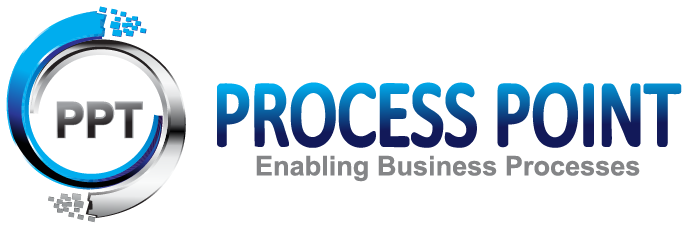CUSTOMER DATA MANAGEMENT
Oracle Customer Hub is designed to perform as a source of clean, complete, distinct and accurate customer data for the entire organizational enterprise.
The primary roles of OCH are:
- Consolidate & govern a unique, complete and accurate set of Master Customer information from across the enterprise.
- Track & maintain changes over time; enhance and deepen the context.
- Distribute this information as a single point of truth to all operational & analytical applications just in time
Master Trusted Customer
Data Oracle Customer Hub masters trusted customer data that includes the following key characteristics:
- Comprehensive Customer Data Model
The OCH data model is an enhanced version of the Siebel Party model (as used in Siebel CRM) and has evolved and developed over many years to the point where it is able to master not only the customer profile attributes required in the front office but also those required by all applications and systems in the enterprise
- Roles and Relationships
OCH provides support for managing the roles and hierarchical relationships not only within a master entity but also across master entities. In addition, OCH also provides capabilities to view and store hierarchical history information of master records.
- Related and Child Data Entities and its Configuration
OCH is designed to store all related and child level customer entities such as Addresses, Related Organizations, Related Persons, Assets, Financial Accounts, Notes, Campaigns, Partners, Affiliations, Privacy and so on. By leveraging the proven Siebel platform, OCH enables users not only to customize and extend existing entities but also to add new child and related entities.
- Industry Variants
The prebuilt customer data model is designed to model and store the customer profile attributes for many major vertical markets and industries, including, but not limited to: Financial Services, Telecommunications, Utilities, Media, Manufacturing, Retail Consumer Goods, HighTech, Public Sector and Higher Education..
Consolidate
Customer data is distributed across the enterprise. It is typically fragmented and duplicated across operational silos, resulting in an inability to provide a single, trusted customer profile to business consumers. It is often impossible to determine which version of the customer profile (in which system) is the most accurate and complete. The “Consolidate” pillar resolves this issue< /p>
OCH solves this problem by delivering the rich set of interfaces, standards compliant services and processes necessary to consolidate customer information from across the enterprise. This allows the deploying organization to implement a single consolidation point that spans multiple languages, data formats, integration modes, technologies and standards. Some of the key features in the “Consolidate” pillar include:
- List Import Workbench
The List import workbench has been enhanced significantly to empower business users to load data into the hub through metadata and template driven approaches including support for flat files, XML files and excel files. The import workbench also includes new user interfaces to resolve error conditions. In addition to providing a high performance, high volume batch import, the list import functionality is also available as a web service for real time integration.
- Identification and Cross-Reference
To capture the best version customer profile, OCH provides a prebuilt and extensible customer lifecycle management process. This process managesthe steps necessary to build the trusted “best version” customer profile: identification; registration; cleansing; matching; enrichment; linking; to create the best version customer profile. The best version customer record also leverages UUID to uniquely identify the record across the entire enterprise. The customer record along with the related child records are tacked across the enterprise by using oneto-many cross referencing mechanism between the OCH customer Id and other applications’ customer records.
- Source Data History
OCH also maintains a history of the changes that have been made to the customer profile over time. This history allows the Data Steward to not only see the lineage associated with a customer record, but also provides the ability to optimize the source and attribute survivorship rules which contribute to building the “best version” record. The history also enables the Data Steward to roll back the system to a prior point in time to undo events such as a customer merge
- Survivorship
The data stewardship and survivorship capability consists of a set of features and processes to analyze the quality of incoming customer data to determine the best version master record. Rules Based Survivorship: OCH has been significantly enhanced to include rules based survivorship that now not only includes pre-seeded rules through its integration with Siebel Business Rules Engine (Haley) but also allows users to define any new rule in addition to allowing users to integrate OCH with any other rules engine. OCH also includes support for new rule types like Master and Slave that would determine survivor and victim records. Finally OCH also supports configuring survivorship rules for Household and any child entity associated with the Master record.
BENEFITS
Oracle Customer Hub delivers high return on investment to its customers resulting in realizing significant revenue improvement and sizable expense savings. While Customer hub makes the IT organization more agile, the major benefit is realized in the businessside enabling business growth, enhancing operational efficiency and improving the organizational compliance. The business growth comes through revenue improvement via the ability to do better cross-sell/up-sell with more accurate customer view, improve customer retention through enhanced customer service and effective marketing campaigns supported by enhanced customer information. Improvements in operational efficiency are specifically in areas of reducing order error rate, B2B sales cycle time or corporate-wide data management costs. Risk and Compliance is a major concern for organizations and a customer hub solution enables organizations to reduce its compliance risks and credit risk costs. Finally the IT agility of the organization increases by reducing integration costs and time to take new applications to market
